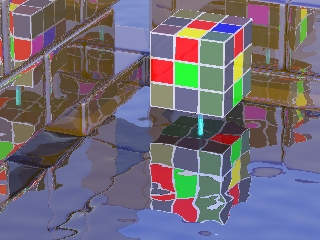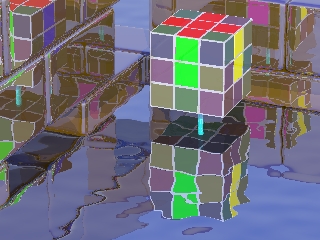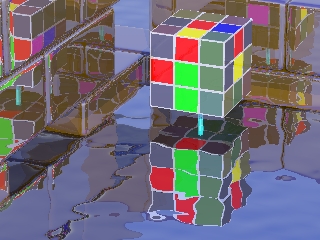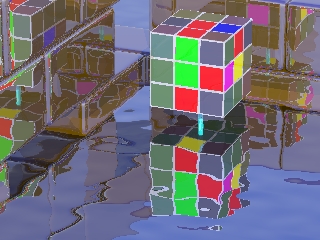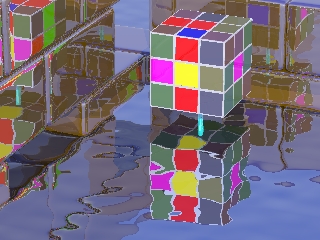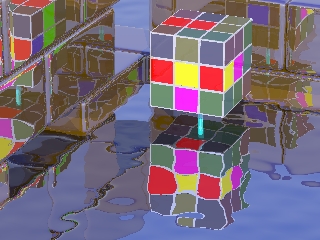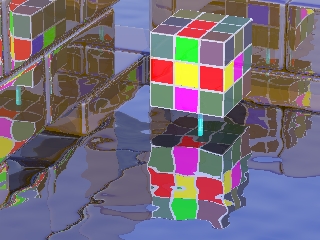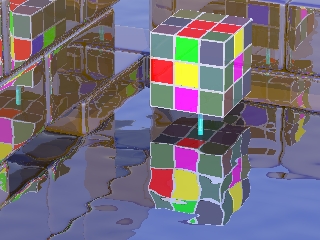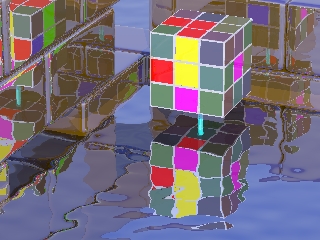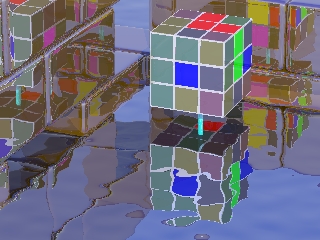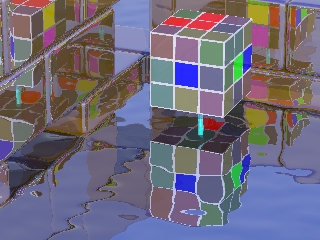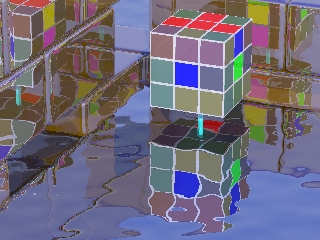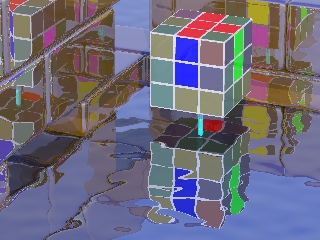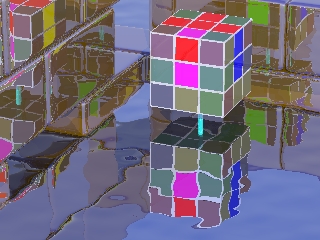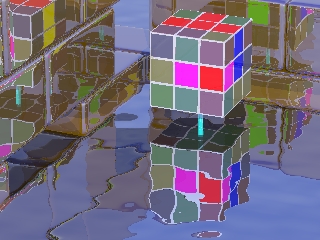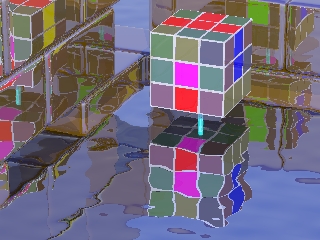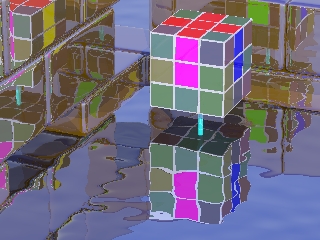This page gives you instructions for the very first step of solving a rubik’s cube – the edge pieces of the first layer. Another page on this site explains what a layer is and why they are important.
So, if you follow the instructions on this page, your rubik’s cube will change…
|
||
|
Choose which layer to solve first!
You need to choose which layer you will solve first. In the pictures on this page, I’m solving the layer with the red middle square. Some tips to keep in mind.
- A piece is in the correct place when its stickers match the middle squares of the faces it’s on.
- This means, the centre pieces are always in the correct place. Now isn’t that nice? That’s six less pieces to worry about.
So choose a colour to solve first. Any colour will do. This is then your “target colour“. So my target colour is red. The layer with the red center is my “target layer“.
To get the edge pieces into their correct positions, you do this :
- Choose one edge piece that belongs on your target layer – your “target piece“. For me, that means choosing an edge piece with a red sticker.
- Move it to its correct position, or “home“. Ok, I guess this is the tricky bit. Detailed instructions on how to do this follow.
- Repeat four times, and you’re done! The edge pieces of the first layer will all be solved! Then you’ll be ready to tackle the Corner Pieces of the First Layer
You can do these first four edge pieces pieces in any order.
How do you move an edge piece to it’s “home”? Well, that depends on where you found it. There’s only a few possibilities, and I’ll cover them one by one.
The lost edge piece might have been
- In the bottom layer, with the target colour facing down. This is the easiest to deal with.
- In the bottom layer, with the target colour facing out.
- In the middle layer
- In the top layer, but the wrong position, or facing the wrong way.
- Well, I suppose if you’re really lucky, you might find your chosen edge piece already in the right place, facing the right way. That is, you don’t need to move it at all. So I suppose actually this is the easiest case to deal with, not the first one.
Bottom Layer, Facing Down
This section explains how to get an edge piece into the correct position in the top layer of your rubik’s cube, if it’s now in the bottom layer, with the target colour facing down. If your target piece is not in this position, then you’re reading the wrong section! Check where it is, and go to the correct section to see how to fix it up.
After you’ve read the instructions below, you may like to watch a video showing the steps.
|
||
|
||
|
Here’s a video clip showing the above steps :
8lk8Ln9_ztI
If your edge pieces are not all solved yet, then choose another, and follow the steps on this page to get it back to where it belongs!
Bottom Layer, Facing Out
This section explains how to get an edge piece into its home in the top layer of your rubik’s cube, if it’s now in the bottom layer, with the target colour facing outwards. If your target piece is not in this position, then you’re reading the wrong section! Check where it is, and go to the correct section to see how to fix it up.
You can see a video animation of this steps instructions here.
|
||
|
||
|
||
|
||
|
Just to make all this clear, I’ve made an animated movie of the above instructions.
Middle Layer
This section explains how to get an edge piece into the correct position in the top layer of your rubik’s cube, if it’s now in the middle layer. If your target piece is not in this position, then you’re reading the wrong section! Check where it is, and go to the correct section to see how to fix it up.
You can see a movie clip of these instructions here
|
||
|
||
|
||
|
Anyway, here’s a short youtube video of these instructions.
If your edge pieces are not all solved yet, then choose another, and follow the steps on this page to get it back to where it belongs!
Top Layer, But Not The Right Place
The last possibility is that the edge piece might be in the top layer, but not in the correct place. If your target piece is not in this position, then you’re reading the wrong section! Check where it is, and go to the correct section to see how to fix it up.
Again, I’ve also made an animation showing how this is done.
The tip here is to bump it out of the top layer, then use one of the methods given above.
Big hint : if my target piece is in the top layer, I normally choose another target first. Why? Because by choosing another target, there’s a good chance I might bump any wrongly-placed edge pieces out of the top layer anyway!
On the other hand, sometimes we’ve got no choice. All the other edge pieces are solved, and the only ones left are in the top layer. Grinning at you, saying ‘watcha gonna do, buddy?!’ This only happens about one time in five, but when it happens, we need a way to fix it. That way is here.
|
||
|
||
|
||
|
And, here’s the animation of the above steps!
If your edge pieces are not all solved yet, then choose another, and follow the steps on this page to get it back to where it belongs!
Top Layer, Right Place
Well, as they say,
Count yourself lucky, and move on!
